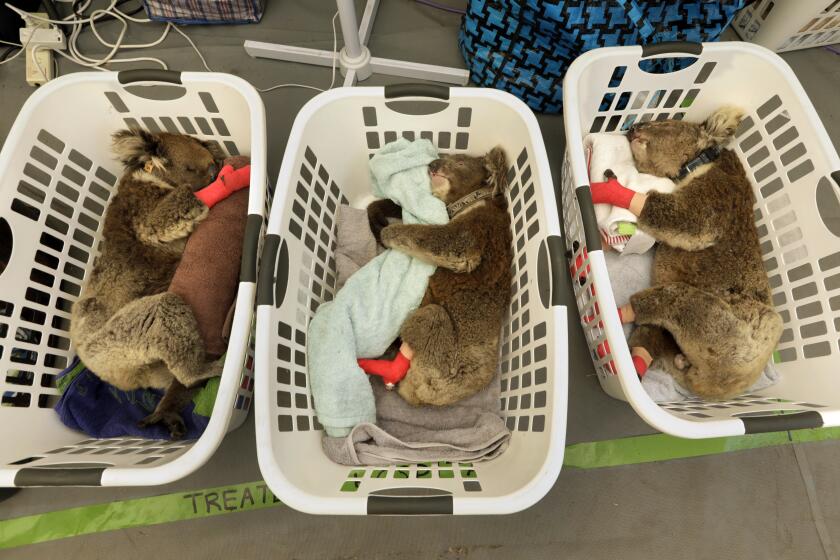Meet the California firefighters helping Australia battle epic bush fires

More than 170 U.S. firefighters are helping their Australian counterparts battle the nation’s worst blazes ever, an assignment that requires adjustment to a new terrain, culture and lingo.
OVENS, Australia — It was a rare victory for the seasoned Americans battling flames Down Under.
Beneath a green eucalyptus canopy in the country’s Australian Alps, the continent’s tallest mountain range dividing New South Wales and Victoria, some of America’s most versatile firefighters, mostly from Southern California, are laboring to help the Australians gain the upper hand against their worst fire season ever.
The work, up until Saturday afternoon, had not always been fruitful for these two dozen firefighters, nearly all of them from the Angeles National Forest. Weekly lightning storms have sparked new fires beyond their defensive positions, and even some older fires have spread so quickly they have outrun crews finishing containment lines.
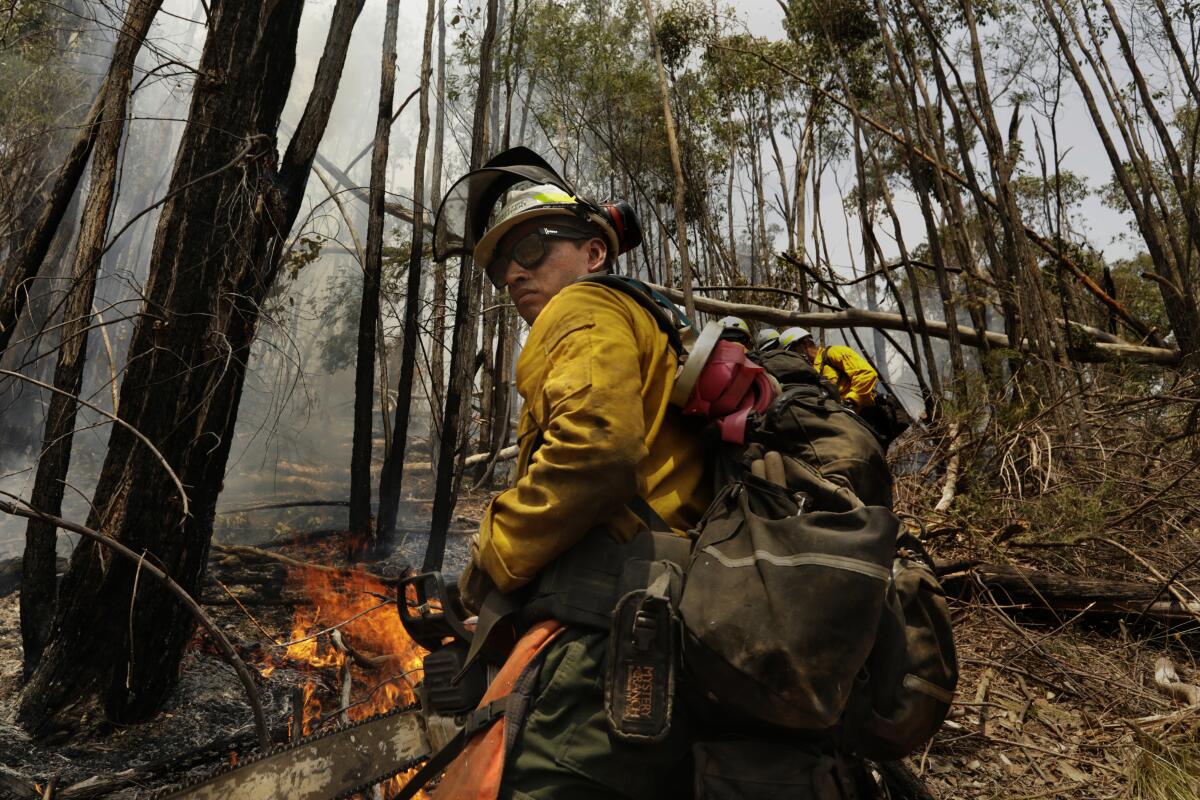
But that afternoon, word crackled over the radio that a containment line they’d dug days before had held up, stopping another blaze’s progress. It was their first success since arriving in Australia on Jan. 8.
“We finally got a win,” said firefighter Benjamin Covault, 40, from McCall, Idaho. “It’s been kicking everyone’s ass.”
“You want the work to be meaningful, but these are huge fires we’re talking about,” said Justine Gude, one of 20 Angeles firefighters in Australia for a monthlong deployment. “You try to take a bite out of it and if it doesn’t work, you pull back and you take another bite. We’re used to it.”
More than 170 U.S. firefighters are in Australia, a country halfway around the world that some of them had never visited. Helping their Aussie counterparts, they have been adjusting to a unique firefighting culture, unusual lingo and landscapes that, while similar in some respects, differ from those of the American West.
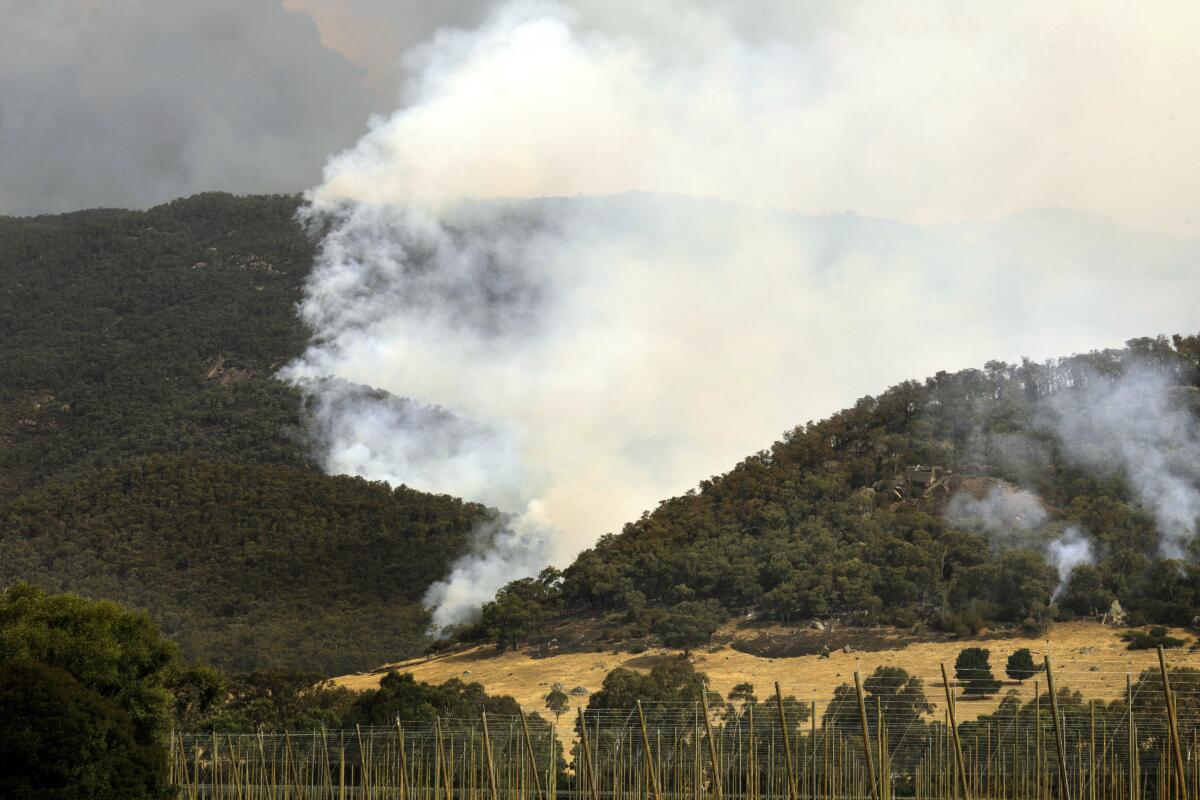
Here in the Alpine National Park near Mt. Buffalo, the ground is softer and the shallow-rooted eucalyptus generally are heavier and burn hotter than the conifers and oaks of the Sierra Nevada, creating a tree-fall danger that’s unpredictable and potentially lethal. As crews carve their way through dead standing trees, venomous ants jump onto their wrists and bite while spiders lower themselves onto their backs.
“Crazy spiders, man, big spiders the size of your hand. Big ants, bullet ants and jumping jacks, ‘hoppers,’ they call ‘em,” said Travis Braten, a U.S. Forest Service firefighter based in Shoshone, Wyo., who was working with the Californians over the weekend. “Some guys have seen snakes. I haven’t seen any, which is just fine with me. Sounds like everything is poisonous.”
Wildfires in Australia are overrunning vast ecosystems and their wildlife. Nearly half of Kangaroo Island has burned.
While these firefighters will bring home anecdotes about everyday oddities — lounging koalas, kangaroos standing by the roadside, brightly colored birds and huge insects — they have been doing the manual labor that comes with an “arduous crew” label, which is how the Angeles National Forest men and women have been categorized while in Australia.
It’s the kind of muscle-aching work that firefighters grind through early in their career until they become more specialized. But because resources are stretched razor-thin in Australia, with so many fires at once, the Forest Service sent over hotshots and veteran firefighters who usually lead their own teams back home and can do it all.
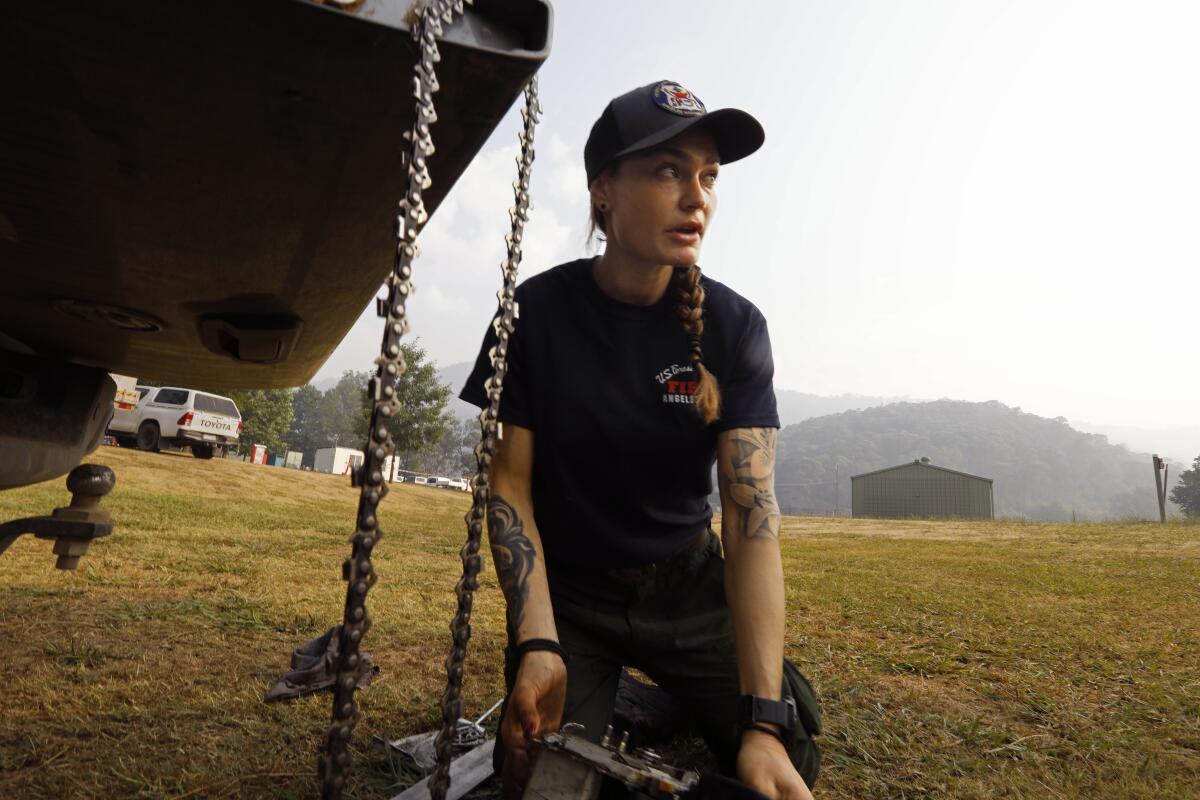
“They say it takes a village, where it takes all types to make a successful hand crew,” Gude said, as she stained her hands and nail-polish black with grit, dirt and oil while cleaning a chainsaw. “You need the funny guy, you need the smart guys, you need the strong guys.”
“Me, I’m the strong guy,” Gude said laughing, noting that her body weight was just twice the poundage of the gear and chainsaw she was carrying. “I’m like an ant.”
Gude is one of two female Angeles National Forest firefighters who arrived in the country this month. She’s also part of a cadre called Women in Fire that promotes fire service opportunities for women. She’s seen more female firefighters in Australia than she normally does back in the U.S., she said.
As she dug her fingers into the chainsaw’s muck to clear it out for another day of work Sunday morning, Gude described how she relishes the chance to challenge her male colleagues on female stereotypes in firefighting.
“I had this captain that used to give me a hard time. He used to be like, ‘Ugh, your hands are so ugly.’ I’d be like, ‘You know what? Shut up dude, you don’t say that to any of the other guys. You want me to work like a man, my hands are going to look like a man’s,’ ” she said laughing.
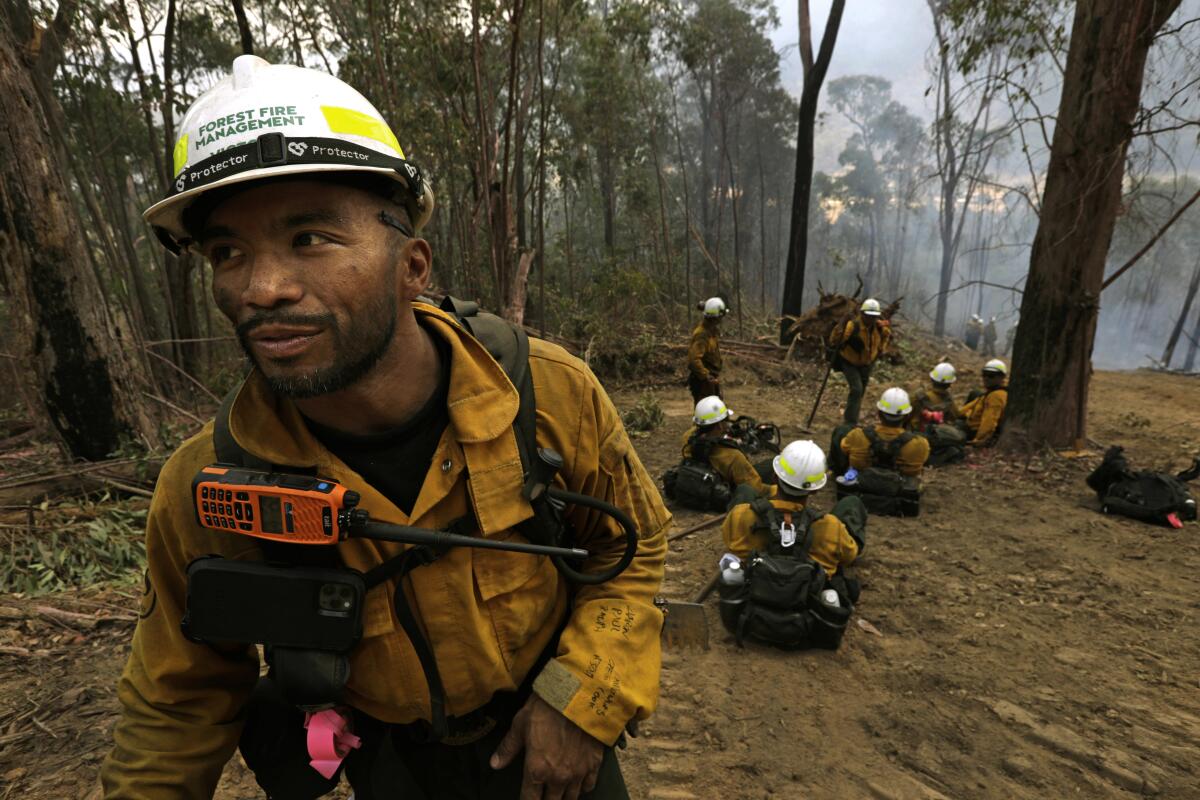
Fires have inundated Australia since November, when a series of lightning storms sparked multiple blazes in the country’s eastern, drought-parched bush lands, known as forests in the United States.
Over several months, the fires have killed at least 29 people while destroying thousands of homes, most of them in New South Wales. The estimated area burned ranges from 12 million to 46 million acres, an area roughly the size of Florida.
While not all towns have been engulfed, despite what social media might suggest, those close to the bush fires have been coping with sporadic evacuations and days and weeks of unhealthy air.
Near Mt. Buffalo, a park roughly 200 miles northeast of Melbourne, the firefighters have made their base camp along the Ovens River tourist town of Bright. With the fires and smoke, businesses have been struggling to stay afloat, but the influx of Americans has been welcomed. Australian officials say the U.S. crews have earned their reputation as among the profession’s best.
“I’ve worked with the Americans before and here there’s no surprises. The arduous crews of America are hard workers,” said David Ross, operations chief for the Abbey Road Fire. “These guys have definitely lived up to … expectations.”
The United States, Australia and New Zealand have helped each other fight fires for more than 15 years, federal officials say. The two countries dispatched crews to U.S. fires in 2018, and the U.S. Forest Service last sent crews Down Under in 2010. There were 178 U.S. personnel in Australia as of Monday, with an additional 40 expected to arrive on Friday, said Forest Service spokeswoman Traci Weaver.
It can take a personal toll on firefighters not fully prepared.
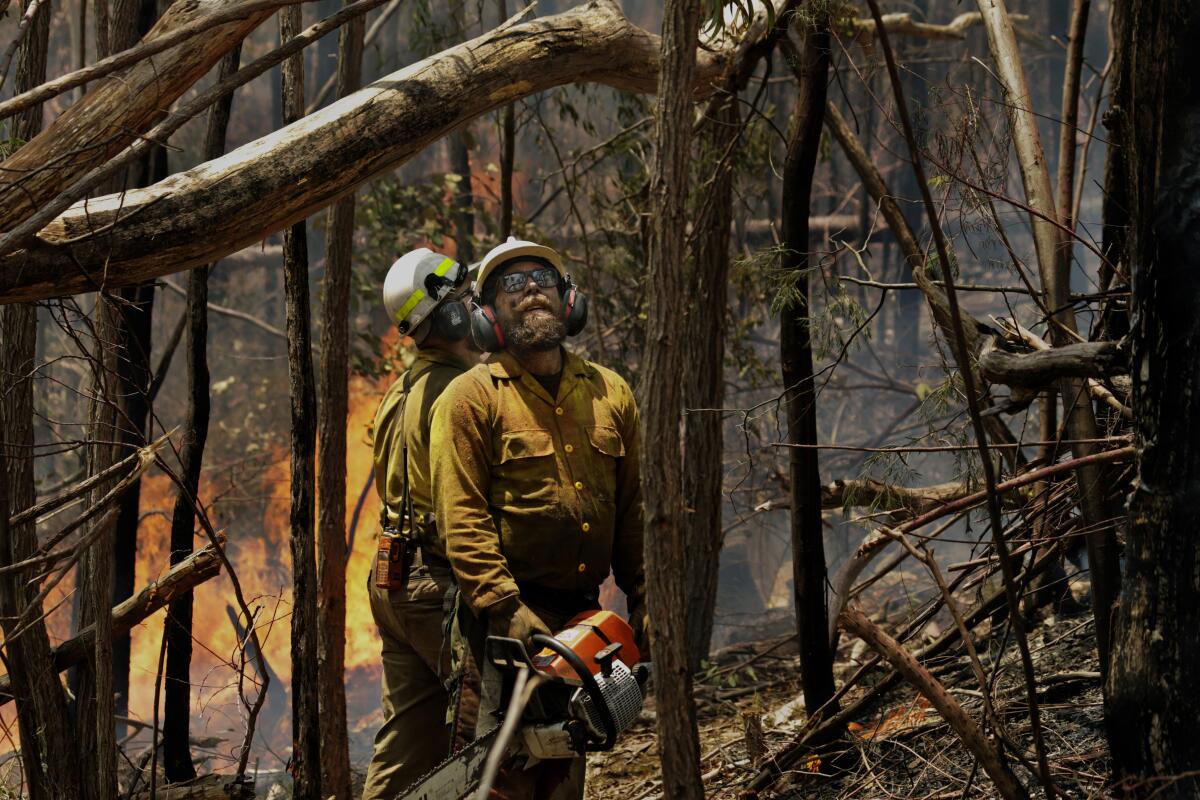
Jonathan Merager, 47, from La Cañada Flintridge, Calif., won’t see his wife and four sons for a month. Twenty years ago he would have gone weeks without speaking with them. But with digital technology, they can chat every day, meaning the separation isn’t as hard as it once was.
“It’s not easy for a lot of folks in this business,” Merager said. “It just takes a lot of coordination, a lot of patience, understanding and empathy.”
When they’re focused on the job at hand, the terrain can seem familiar, the Californians said. The hills are dotted with earthy-green tree canopies that make way to valleys covered with gold, tall grass fields filled with cows.
“Just exchange the eucalyptus with the oak trees out there and it’d look just like home,” said Eduardo Valle, 30, a firefighter from Lancaster, Calif.
But there are subtle things that can remind them that they’re another world away.
“Off the fire line, we say ‘Hey, good morning. Hello,’” Valle said, chuckling. “They say, ‘G’day mate.’ It’s crazy.”
Firefighters say the Australian accents sometimes require greater focus to understand over the radio. The term they use for dead standing trees is “stag” instead of “snag,” and calling in a tanker means requesting a water-carrying fire truck instead of an aircraft dropping water or retardant.
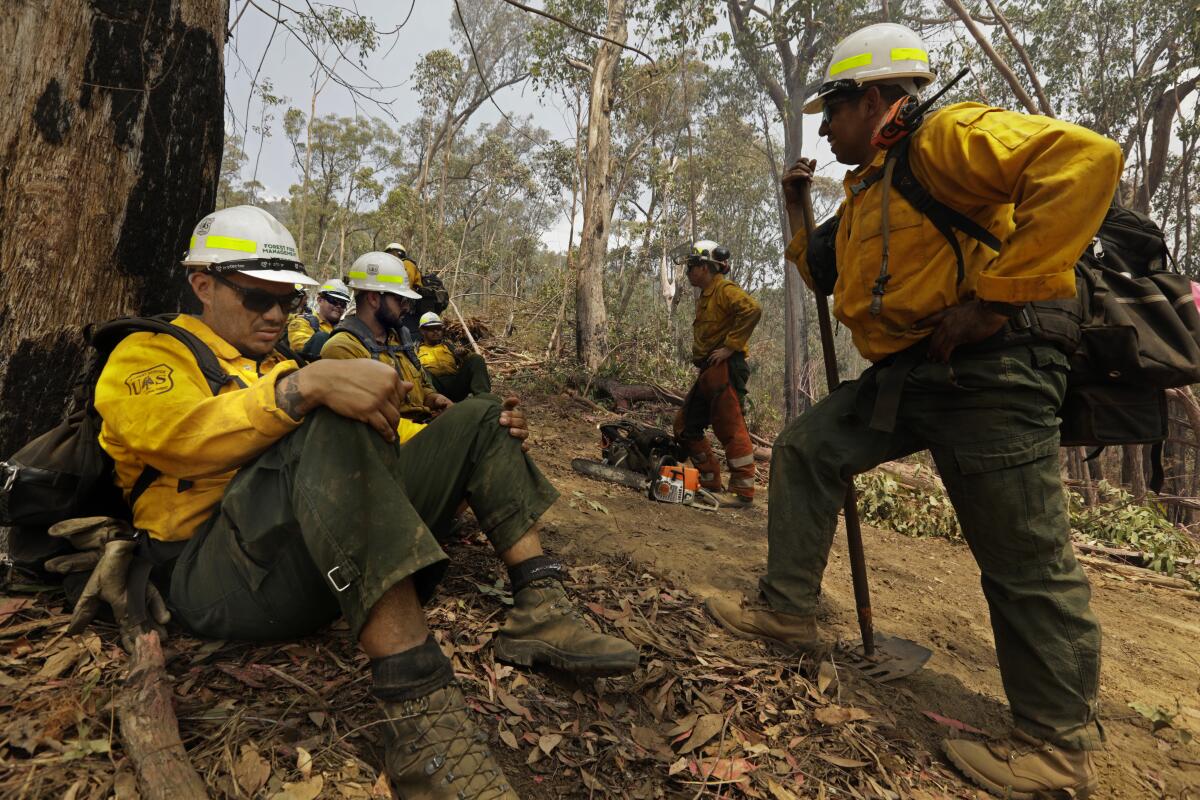
With resources depleted by the number of fires, the Californians have had to adjust to a more defensive strategy from their Australian commanders.
“It’s impressive they get as much done with what they have and that kind of drives their strategies and tactics,” said Leonard Dimaculangan, 41, captain of the Angeles National Forest Texas Canyon hotshot crew.
Burning eucalyptus bark peels off like paper and carries in the wind like a plane. Firefighters have reported spot fires up to 18 miles ahead of a fire’s main front, creating an impossible challenge to contain.
While rain is in the forecast for Victoria, New South Wales could face hot, windy conditions with possible dry lightning in coming days. Fire officials there have warned residents to prepare their homes for additional blazes.
It is these types of firefights that forge relationships, Gude said.
“It’s the most fun you’ll ever have in a [bad] situation,” she said. “Whenever something’s really difficult and you come out the other side with a group of people, it makes you extra close.”
